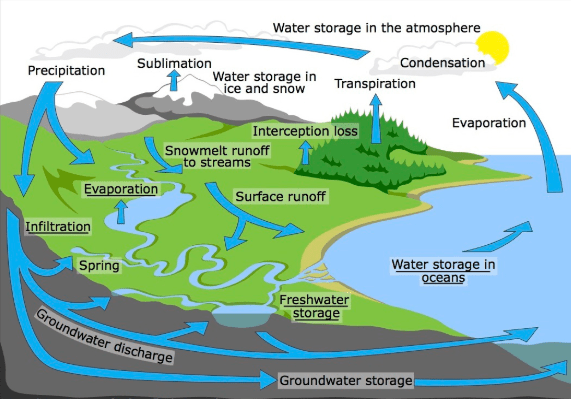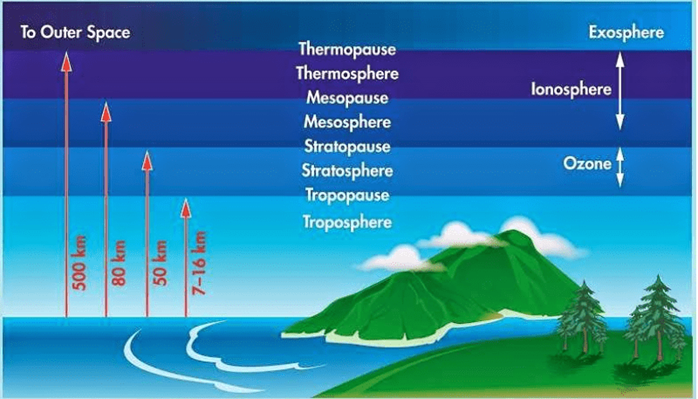Class 7 Geography Chapter 1 Environment Important Questions and Answers
CBSE Class 7 Geography Chapter 1 Environment Important Questions and answers cover all the major concepts of the chapter. Solving answers of these important questions help students to revise the Chapter most competently. We prepared these questions as per the latest NCERT book and CBSE syllabus. Practising class 7 important questions before the exam will ensure excellent marks in the exam.
Environment Class 7 Geography Important Questions
Very Short Answer Type Question
1. What is environment? [Imp.]
Answer: Everything that we see in our surroundings forms environment. It is our basic life support system. It provides us air, water, food and land—the basic needs of our life.
2. Why is our environment changing? [V. Imp.]
Answer: Our environment is changing because our needs are increasing day by day. To fulfil these needs we often don’t think about the environment and start modifying it.
3. What are the basic components of natural environment?
Answer: The basic components of natural environment are—land, water, air, plants and animals.
4. What does lithosphere provide us? [Imp.]
Answer: Lithosphere provide us forests, grasslands for grazing land for agriculture and human settlements. It is a rich source of minerals.
5. Name different types of water bodies.
Answer: Rivers, lakes, seas, oceans, etc.
6. How is atmosphere important for us? [Imp.]
Answer: Atmosphere protects us from the harmful rays and scorching heat of the sun.
7. What do you see in the deserts? Name some animals.
Answer: We see camels, snakes, lizards and insects.
8. What is barter system?
Answer: Barter system is a method of trade in which goods are exchanged without the use of money.
9. Distinguish between biotic and abiotic environment with examples.
Answer: The world of living organisms is known as biotic environment. Example: plants and animals. The world of non-living elements is known as abiotic environment. Example: land.
10. How is environment important for us?
Answer: It is important for us because it is the provider of air, water, food and land— the basic necessities of life.
Short Answer Type Questions
1. Define natural environment. What are its domains?
Answer: All the objects created by nature comprise of natural environment. It includes both biotic as well as abiotic condition existing on earth. Lithosphere, hydrosphere, atmosphere is the domain of natural environment.
2. What is hydrosphere?
Answer: The domain of water is referred to as hydrosphere. It comprises various sources of water and different types of water bodies like rivers, lakes, seas, oceans, etc. It is essential for all living organisms.

3. Define environment?
Answer: Whatever we see surrounding us is our environment. Environment is our basic life support system. It provides the air we breathe, water we drink, the food we eat and the land where we live.
4. What is Lithosphere?
Answer: Lithosphere is the solid crust or the hard-top layer of the earth. It is made up of rocks and minerals and covered by a thin layer of soil. It is an irregular surface with various landforms such as mountains, plateaus, plains, valleys, etc. Landforms are found over the continents and also on the ocean floors.
5. What is Atmosphere?
Answer: The atmosphere is the thin layer of air that surrounds the earth. The gravitational force of the earth holds the atmosphere around it. It protects us from the harmful rays and scorching heat of the sun. It consists of a number of gases, dust and water vapour. The changes in the atmosphere produce changes in the weather and climate.

6. What is Biosphere?
Answer: Plant and animal kingdom together make biosphere or the living world. It is a narrow zone of the earth where land, water and air interact with each other to support life.
7. Write a note on lithosphere. [Imp.]
Answer: Lithosphere is the solid crust or the hard top layer of the earth. It is made up of rocks and minerals. It is covered by a thin layer of soil. It is an irregular surface with various landforms such as mountains, plateaus, desert, plains, valleys etc. Lithosphere plays an important role in our life. It provides us forests, grassland for grazing , land for agriculture and human settlements. It is also a treasure of various minerals.
8. Give an account of atmosphere.
Answer: Atmosphere is the thin layer of air that surrounds the earth. It is made up of various gases such as oxygen, nitrogen, carbon dioxides, dust particles and water vapour. The gravitational force of the earth holds the atmosphere around it. It protects us from harmful rays and scorching heat of the sun. The changes in atmosphere produce changes in the weather and climate.
9. How do human beings modify natural environment? [V. Imp.]
Answer: The needs of human beings are increasing day and day. Hence, they modify natural environment to fulfil these needs. Sometimes they even destroy their environment
Human beings have made cars for their convenience. These cars release fumes which pollute the air. They have established factories on land. These factories manufacture various items such as containers. This is how they modify the natural environment.
Long Answer Type Questions
1. Give an account of various domains of the environment.
Answer: Various domains of the environment are:
- Lithosphere
- Atmosphere
- Hydrosphere
- Biosphere
Lithosphere: It is the solid crust or the hard top layer of the earth. It is made up of rocks and minerals and covered by a thin layer of soil. It provides us forests, grasslands and land. It is a source of mineral wealth.
Atmosphere: It is the thin layer of air that surrounds the earth. The gravitational force of the earth holds the atmosphere around it. It protects us from harmful rays and scorching heat of the sun. It consists of various gases, dust and water vapour.
Hydrosphere: It refers to various water bodies such as rivers, lakes, seas, oceans, etc. that exist on the earth.
Biosphere: Biosphere or the living world is comprised of plant and animal kingdom. It is a narrow zone of the earth where land, water and air interact with each other to support life.
2. How have human beings adapted to the environment to fulfil their needs?
Answer: Human beings from the early times have been interacting with the environment and modifying it according to their needs. Early humans adapted themselves to the natural surroundings. They led a simple life and fulfilled their requirements from the nature around them. But their needs kept on increasing. They became varied also. To fulfil these varied needs, humans learnt to grow crops, tamed animals and began a settled life. The wheel was invented, surplus food was produced, barter system emerged, trade started and commerce developed. Industrial revolution made possible large scale production. By and by transportation became faster. Information revolution made communication easier and speedy across the world. In this way human beings adapted to the environment in order to fulfil their needs.
3. Explain “Impact of human activities on Natural environment as well as on human life”
Answer:
- Environmental pollution has affected humans, animals, plants and ecosystem. Air, water, land and noise pollution has greatly affected the environment.
- The depletion of ozone layer due to air pollution allows entering of UV rays from sun into the earth’s atmosphere which is associated with a number of health related and environmental issues. The depletion of ozone layer has effects in the form of global warming, which in turn leads to melting of polar ice, which will lead to rising sea levels and climatic changes around the world.
- Environmental degradation has a host of negative outcomes that effect human beings both directly and indirectly such as increased poverty, famine, weather extremes and species loss.
- Garbage from households and industrial units causes damage to local ecosystems, and it is a threat to plant and animal life. For example, landfills serve as a popular dining location for birds and other animals, but some of what they eat can cause diseases. Garbage and liquid waste that end up in water bodies negatively change the chemical composition of the water thereby causing water pollution.
4. How did human interaction with the environment change over time?
Answer: Human beings interact with the environment and modify it according to their need. Early humans adapted themselves to the natural surroundings. They led a simple life and fulfilled their requirements from the nature around them. With time needs grew and became more varied. Humans learn new ways to use and change environment. They learn to grow crops, domesticate animals and lead a settled life. The wheel was invented, surplus food was produced, barter system emerged, trade started and commerce developed. Industrial revolution enabled large scale production. Transportation became faster. Information revolution made communication easier and speedy across the world.